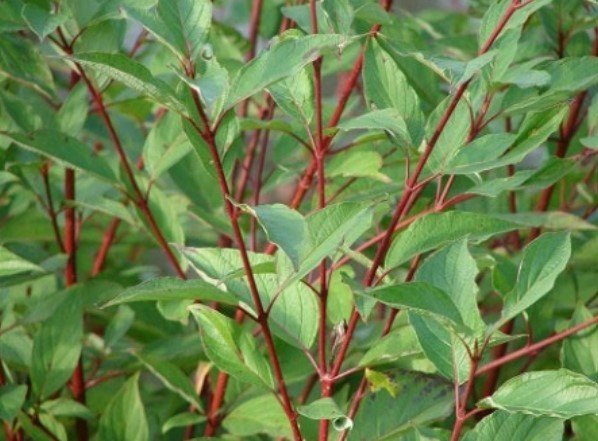 Image 1 of 4
Image 1 of 4

 Image 2 of 4
Image 2 of 4

 Image 3 of 4
Image 3 of 4

 Image 4 of 4
Image 4 of 4





Cornus sericea ssp. occidentalis (Red-osier Dogwood)
Red-osier/red-twig dogwood is prized in the landscape for its vibrant red and green twigs that brighten the winter landscape, and for the many species of wildlife, including beneficial insects, that it supports.
Its tiny flowers are fragrant and white, appearing in flat-topped clusters in late spring, while its fruit clusters (also whitish with an occasional blue tinge) form later in summer; it sometimes produces a second flush of flowers and fruits.
It"s an upright-spreading, suckering shrub that can grow 6-9+ ft. tall without pruning. To encourage vibrant-red new-stem growth, prune older stems in the early spring.
It is tolerant of a wide range of soils, including wet soils, and can be planted in full sun to part shade. Mix it with other brightly-hued deciduous shrubs and those with interesting evergreen foliage.
Red-osier/red-twig dogwood is prized in the landscape for its vibrant red and green twigs that brighten the winter landscape, and for the many species of wildlife, including beneficial insects, that it supports.
Its tiny flowers are fragrant and white, appearing in flat-topped clusters in late spring, while its fruit clusters (also whitish with an occasional blue tinge) form later in summer; it sometimes produces a second flush of flowers and fruits.
It"s an upright-spreading, suckering shrub that can grow 6-9+ ft. tall without pruning. To encourage vibrant-red new-stem growth, prune older stems in the early spring.
It is tolerant of a wide range of soils, including wet soils, and can be planted in full sun to part shade. Mix it with other brightly-hued deciduous shrubs and those with interesting evergreen foliage.
